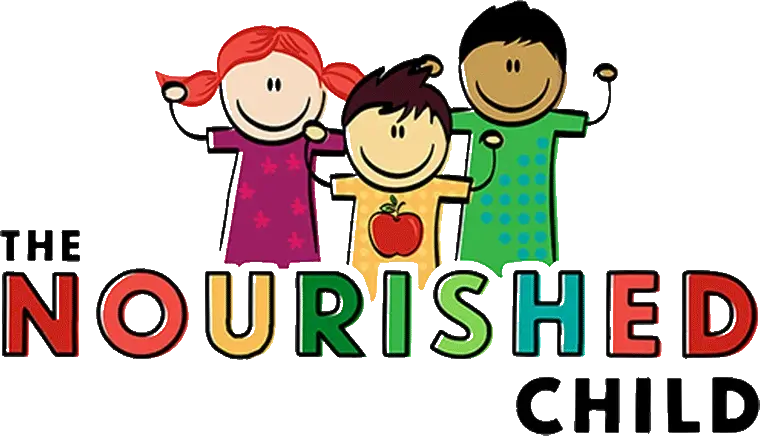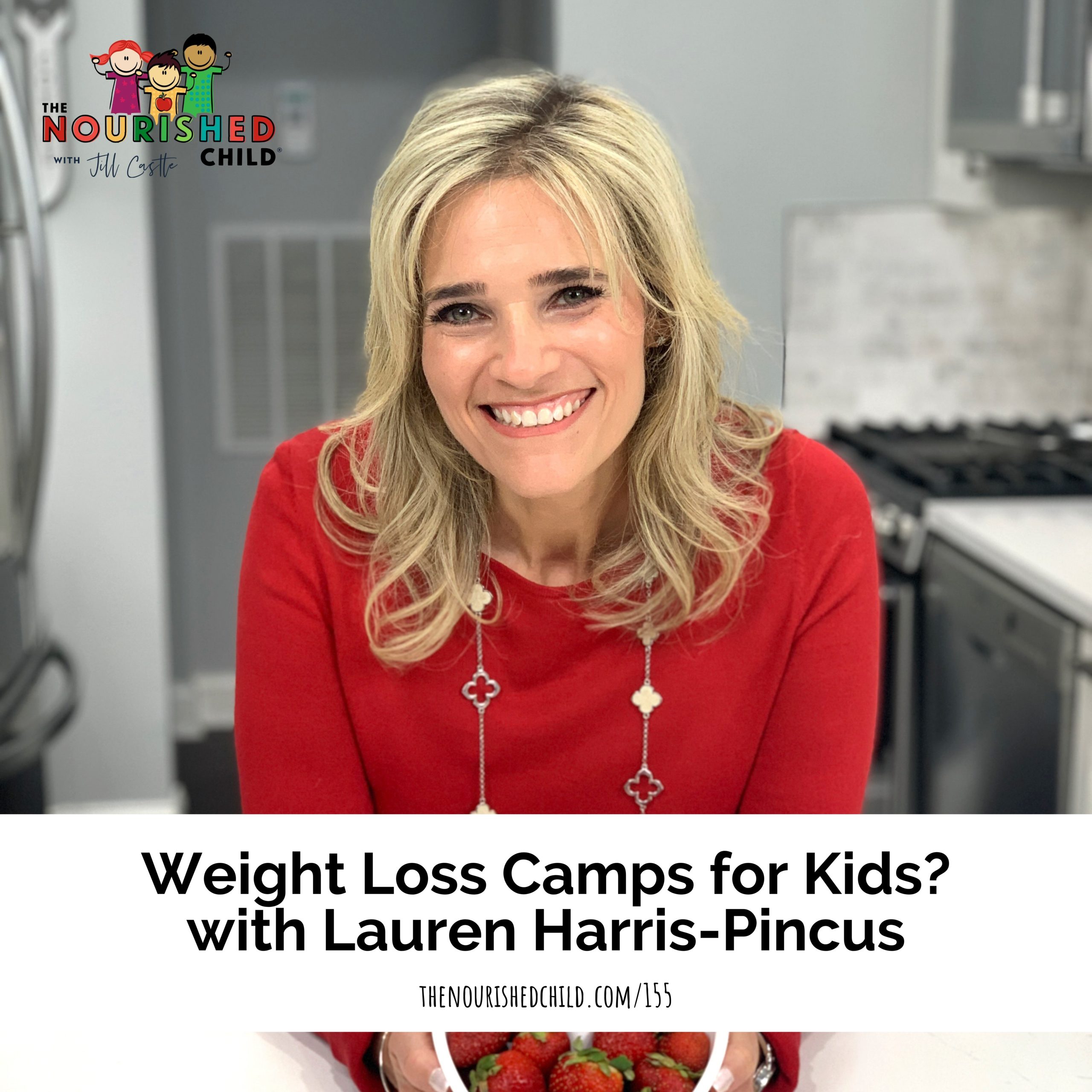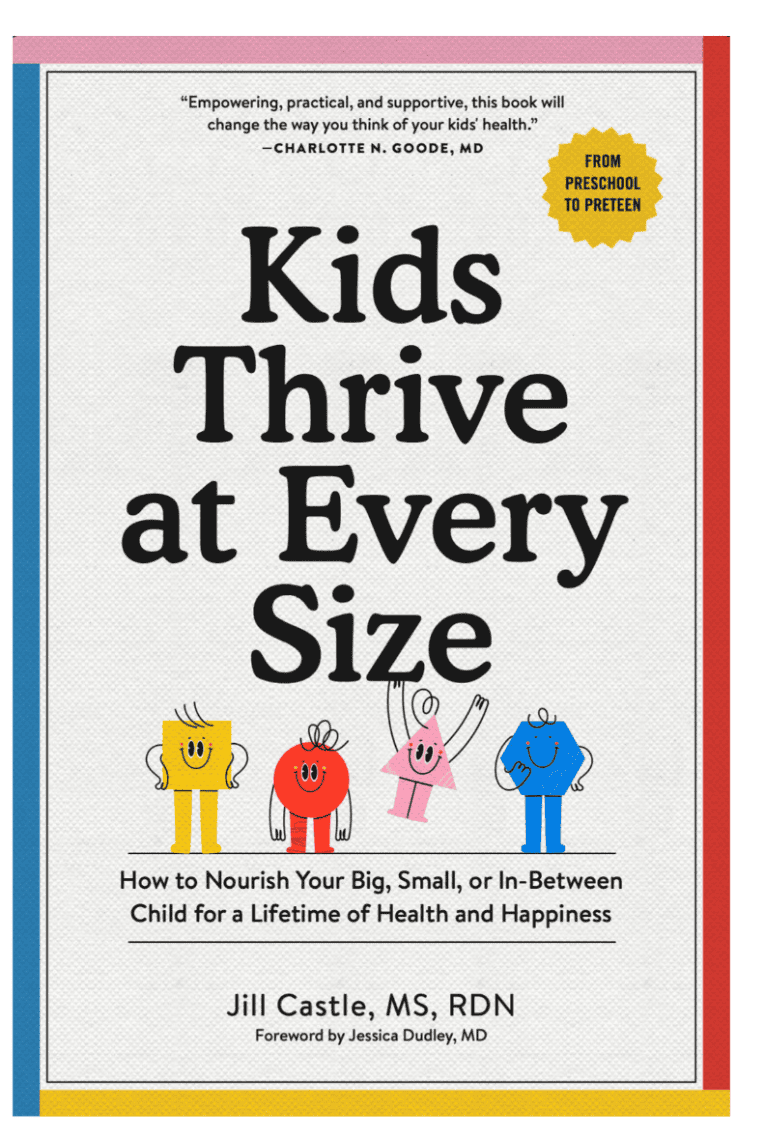Food for Baby Led Weaning: What to Feed and Tips for Success
February 25, 2022
Baby led weaning is an increasingly popular way to introduce solid food to babies. Let’s dive in to what it is, what it’s not, and what the best foods for baby led weaning are.
Here comes the airplane!
Spoon feeding is the traditional way to introduce solids to babies, but it has its challenges.
Concerns about overfeeding and disrupting a child’s natural ability to know when he’s had enough, has parents looking for another way to introduce solids.
Baby led weaning may be the answer for families.
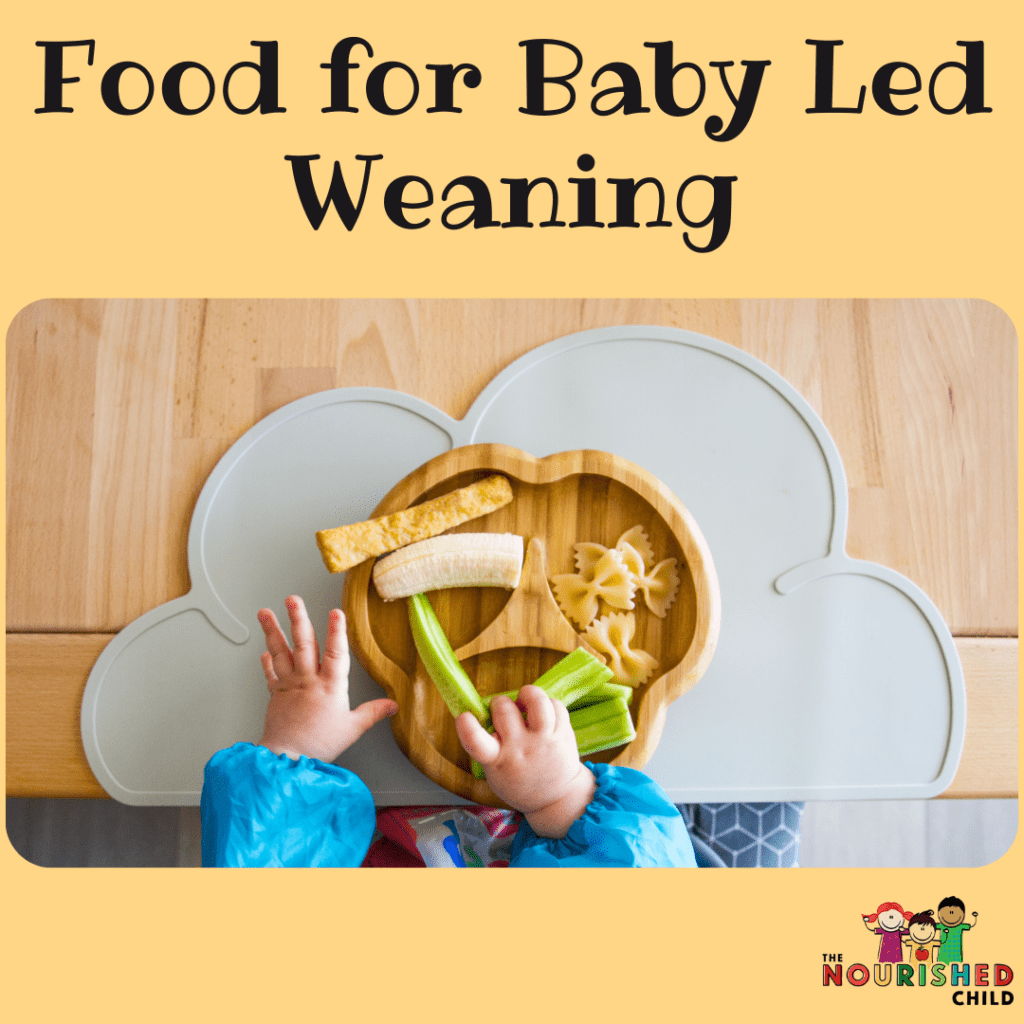
At around 4 to 6 months old, your baby becomes less dependent on formula or breast milk and more interested in food. It’s an exciting period in your baby’s life, but it’s also a very important one. The transition to solid food can affect your baby’s food preferences, eating behaviors and health, even into adulthood.
In this article, you’ll learn about baby led weaning, the best foods for baby led weaning, and some things to watch out for.
What Is Baby Led Weaning?
Baby led weaning is a way to introduce solid foods to your little one that encourages curiosity and autonomy.
Instead of offering store-bought purees, you provide soft foods such as cooked vegetables, soft fruits, and other finger foods your baby can eat on his own. Your baby can control how much food he takes in, or self-regulate, making it more likely he’ll eat the amounts of food corresponding to his appetite.
Baby finger foods help babies develop hand-eye coordination, learn to chew and swallow food safely, and become more interested in trying new foods.
This method may also help your child develop a love for eating a variety of food, instead of becoming too dependent on purees and baby foods.
What Baby Led Weaning Is Not
Before your child reaches 1-year-old, solid foods are supplemental, or what is referred to as complementary foods. Babies still get the bulk of their nutritional needs from formula or breast milk and solids add texture, flavor and nutrients.
Don’t worry about meeting all your child’s energy and nutrient needs with baby led weaning foods in the early stages.
The point is to let your child explore food so that he or she grows up to be a more adventurous eater.
What Are the Best Foods for Baby Led Weaning?
Introducing baby led weaning foods is your child’s first foray into the world of food.
This can include anything your child can eat on their own, from yogurt on a spoon (which you give to your child to place in his mouth) to soft fruits and vegetables your baby can grasp in his hand, and other baby finger food.
Some good choices include:
- Soft fruits and vegetables such as bananas, avocados, and cooked sweet potatoes, cut into strips that baby can easily grasp
- Plain yogurt (very messy!); pre-load onto a spoon and let baby put in mouth
- Cheeses cut into graspable strips
- Grains: toast strips; add toppings like avocado, or thin smear of nut butter
- Tender meats: cooked chicken, beef, pork
It’s important to introduce a variety of different flavors and textures as your child progresses through baby-led weaning.
If you want to know more about how to cut foods for baby-led weaning, check out this article. As your baby grows, there’s a variety of healthy toddler finger foods to keep him interested in trying new foods.
What Should You Watch Out for?
There are a few things to watch out for when introducing baby led weaning foods.
Ensure your child is sitting upright during meals and not lying down or playing with food. This will help protect him from choking.
Next, be sure to feed only soft foods that are easy for a baby to chew and swallow, such as fruit and vegetables cooked until tender enough to mash with the tongue.
Avoid giving your baby foods that are high in sugar or salt, often found in ultra-processed foods.
Be sure to avoid giving your child foods that are:
- High in salt
- Containing sugar, including honey
- Too hard, such as nuts and seeds
- Tiny, which could pose a choking hazard
Food Allergies and Baby Led Weaning
It’s important to watch for any adverse reactions when starting solids, such as a rash, vomiting or difficulty breathing. These may be signs of a food allergy. However, according to recent studies, introducing allergens, including peanut butter, to children early may lower the risk of developing a food allergy.
Talk with your pediatrician about how to introduce each of the top food allergens safely into your little one’s diet.
The 9 most common food allergens include:
- Wheat
- Soybeans
- Eggs
- Milk
- Peanuts
- Tree nuts (almonds, cashews, and walnuts)
- Fish
- Shellfish (lobster and shrimp)
- Sesame seeds
Baby Led Weaning Food Choking Hazards
Choking hazards are another concern when your child first learns to eat solid foods. Food choking hazards include hard, round or sticky food and tiny pieces of food that could get lodged in your little one’s throat.
Babies weaned with a baby led weaning approach aren’t at a significantly higher risk of choking compared to other traditional methods of introducing solids, as long as we educate parents about choking prior to embarking on BLW, according to a recent review.
No matter how you decide to start solids, I recommend being cautious with common choking hazards in babies.
Be sure to avoid these common choking hazards:
- Popcorn
- Grapes
- Hard candy
- Chips
- Raw vegetables
- Hot dogs
Don’t panic if your baby gags. Gagging is pretty common when babies are learning to eat and try new foods.
Baby Led Weaning and Nutritional Needs
Some babies prefer to fill up on milk (formula or breast) instead of exploring baby finger foods.
However, 6-month-olds need to move on to textured foods as it’s part of their oral motor development.
Some parents are concerned that their baby can’t eat enough food on their own or get all the nutrients they need when using the baby led weaning approach. Therefore, it’s important to offer high fat, nutrient-dense foods, especially baby led weaning foods that contain iron.
You can always add commercial purees to the baby led weaning approach (called a mixed, or hybrid feeding approach) or make your own homemade baby food. It’s easy to do and your baby will still get the benefit of learning the flavor of foods from the family table.
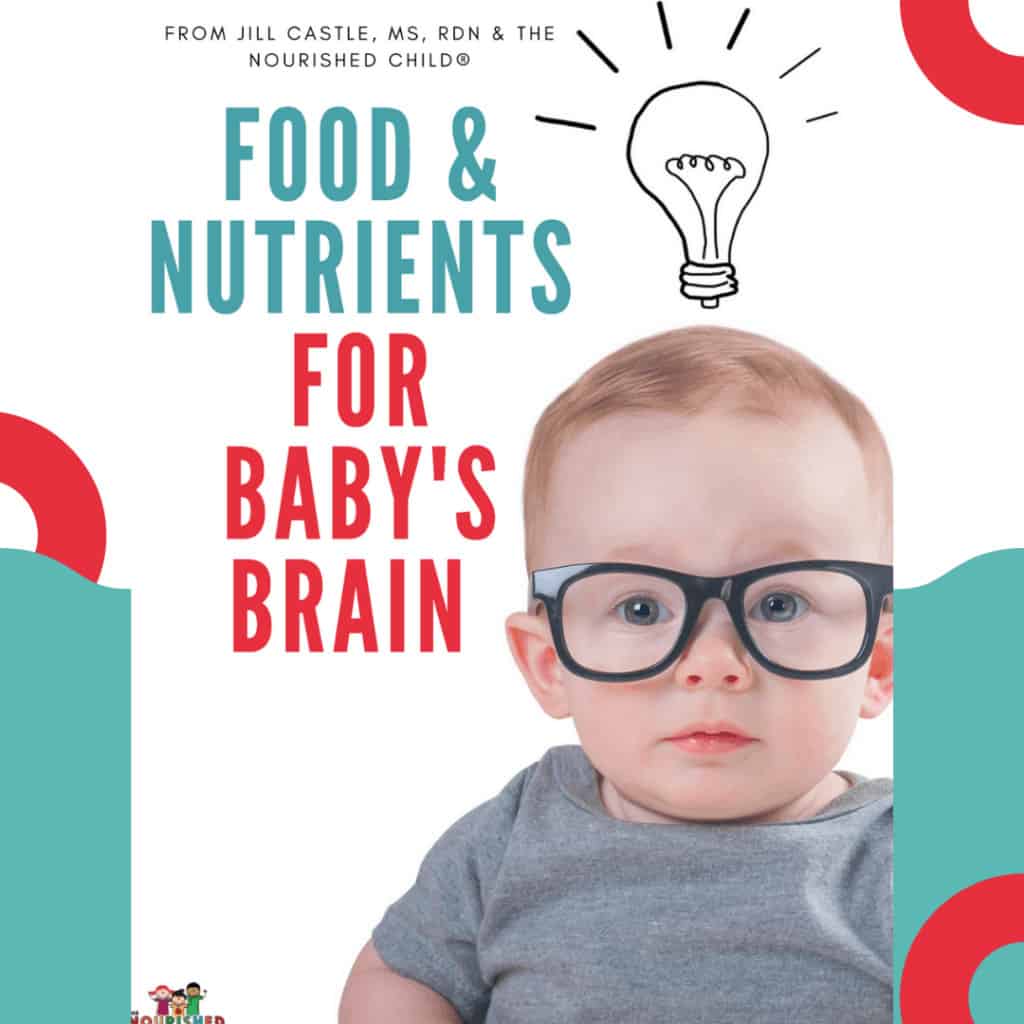
Get the Food & Nutrients for Baby’s Brain!
Final Thoughts on Food for Baby Led Weaning
Food for baby-led weaning doesn’t have to be bland or boring – there are many delicious and nutritious options available.
Baby-led weaning is a great way to let your child explore new textures and flavors while exercising his self-feeding and self-regulation skills.
It may seem daunting at first, but when you see your baby try new foods on his own (with a little help), you’ll be glad you started baby-led weaning.
Don’t forget to check out The Ultimate Guide to Baby Nutrition in the First Year!

Jill Castle, MS, RD
I like empowering parents to help their children and teens thrive at every size with realistic advice centered on healthful habits around food, feeding, nutrition and health behaviors. As a pediatric dietitian and author, my goal is to share strategies and realistic advice to help you raise a healthy and happy child through my articles and podcast.
